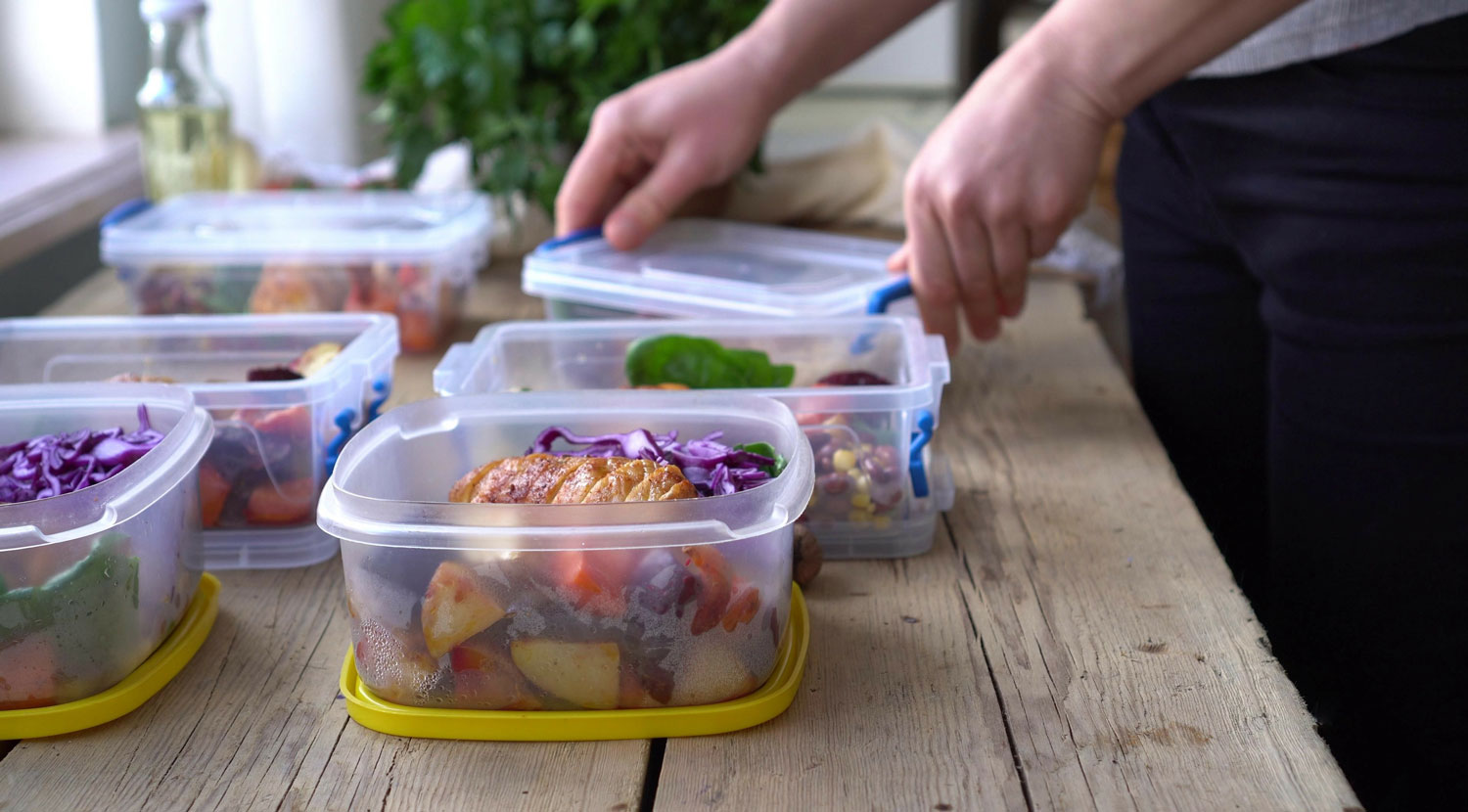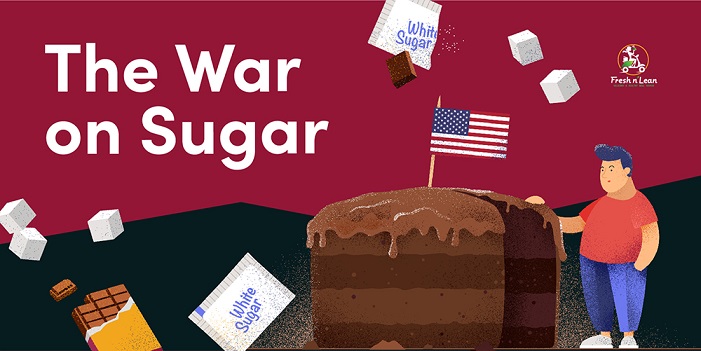[Updated: May 2023]
SUMMARY
Are you interested in meal prepping, but clueless as to what it’s all about? Here are five simple steps to meal prepping for beginners.
People that succeed with healthy eating and see long-term results usually have one crucial thing in common: They know a thing or two about how to meal prep.
It’s a ritual they’ve ingrained into their everyday life, allowing them to put their diet on autopilot (and enjoy an extra serving of leisure time instead).
You might be sitting wondering:
“Meal prep sounds like a great idea, but it seems so complicated and scary”.
Whether you’re a seasoned healthy eater or you’re just getting started, don’t fear… You can also make it even easier, check out our ready-to-eat meal plans. Delivered.
If you’re ready to make it yourself, we’ve put together an in-depth meal prep guide. It has everything you could possibly need to know about prepping healthy meals and seeing sustainable results with your diet. From which containers work best to all the delicious recipe options you could hope for – we’ve got you covered.
Let’s dive in…
All you need to do is follow below five simple steps, and you can enjoy delicious, nutritious meals whenever you like.
Table of Contents
The Big Benefits of Meal Prep
The Different Levels to Meal Prepping
5 Steps to Successful Meal Prepping
Meal Prep FAQs
Healthy Meal Prep Infographic
The Big Benefits of Meal Prep
Before we look at exactly how to get started with your meal prep journey, let’s take a quick glance at some of the amazing benefits it has to offer (some of which might surprise you).
“When you prep your food with the intention of maximum health benefits, you’re going to be eating a solid meal every time.”
– Mike Israetel, Ph.D., U.S. Olympic Sports Nutrition Consultant
The Top 4 Meal Prep Benefits
- Save 9 Days A Year. On average, Americans who cook at home spend 7 hours plus on food prep and cleanup each week – equivalent to more than 2 solid weeks of the year (15.8 days) just in the kitchen! Seasoned meal preppers, on the other hand, can batch cook a week’s worth of meals in one speedy 1-4 hour block (this lady took just 30 minutes). Using a conservative figure of 3 hours still leaves you with more than 9 extra days every year to fill doing things you love!
- Make Healthier Choices. The Harvard School of Public Health concluded that meal prep can “help with weight control [and] contribute to an overall more nutritionally balanced diet”. The simple truth is that by creating meals from scratch, you have complete control over what goes into your body. And because everything is pre-made, the temptation to buy unhealthy snacks or resort to Uber Eats is no longer an issue…
- Supercharge Your Productivity. Innovative leaders like Steve Jobs and Einstein were known for wearing the same outfits every day. Why? It’s all about eliminating decision fatigue. By minimizing the number of decisions in your day, you have more time and energy to be productive. Likewise with your meal prep. You no longer have to worry about what you’re going to eat multiple times a day – freeing your mind and skyrocketing your productivity. And by always having healthy meals on hand, distracting hunger pangs and pesky brain fog are no longer on your radar either. Win-win.
- Save $215,000 (+Reduce Waste by 62%). Waste is a growing problem worldwide, so anything we can do to reduce our footprint is great news. By planning your meals, you buy only the ingredients you absolutely need. Not only does this mean way less food wasted at the end of the week (up to 62%), it also results in a whole lot of money saved too. For the average American, meal prepping could potentially add an extra $215,000 to their retirement fund. Not bad for a little bit of forward thinking.
The Different Levels to Meal Prepping
Meal prepping is a fine art, and there are many ways to skin the orange. The two main methods include:
Option 1 – The Partial Meal Prep
As the name suggests, partial meal prep means you prepare most of your meal beforehand, but it still leaves you with a little work to do before it’s complete.
So you might cook up a big batch of grains or a wholesome salad that you can dip into and transform into a variety of culinary masterpieces as you see fit.
The big benefits?
Partial prep doesn’t take a big chunk of time to get started with, and it gives you a little more room for creativity when it comes to meal times.
The downside is that it requires a little more time and effort in the moment to complete your meal before you can tuck in.
Option 2 – Fully Cooked Meal Prep
If you go the whole way and prep your entire meals, the big plus point is that there are no steps required prior to cooking. You can just heat and eat whenever you feel, and you’re good to go.
Sure, you need to set aside a bigger chunk of time initially. However, in the grand scheme of things, you’re cutting down your total time in the kitchen.
In terms of what you actually eat:
These could be homemade meals you’ve already portioned out yourself, or ones bought and stored in bulk. It’s a great option if you’re looking to maximize the amount of time saved and minimize the number of decisions you need to make in a day.
5 Steps to Successful Meal Prepping
Learn how to meal prep like a pro in five easy steps.
Step 1 – Plan Your Prep
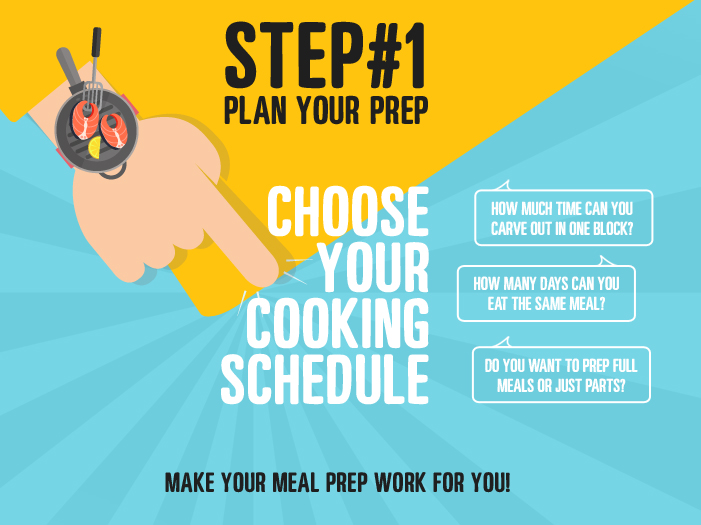
*for fully cooked individual meal prep
“Before anything else, preparation is the key to success.”
– Alexander Graham Bell
As with many things in life, a little planning with your meal prep can go a long way.
Not only does it make things easier for you in the kitchen, but meal planning has even been linked to improved health. A 2017 study showed that thinking ahead when it comes to your nutrition is associated with better food quality and variety, and lower incidences of obesity.
So what are the main things to consider when doing just that?
First up – choose when you’d like to cook your meals
It may sound like a trivial step, but it’s probably one of the most important.
Here’s the thing:
Our guess is that you’re already super busy. Juggling work, family commitments, school, household chores – let alone finding the time to do something for you…
One of the biggest reasons why people struggle to make lasting changes to their diet isn’t because they lack willpower – it’s because of the method.
Preparing meals from scratch day in day out becomes another daunting task to add to the infinitely long to-do list.
The great thing with meal prep is that it only takes a chunk of time once or twice out of your week. You can pick whenever suits you best!
Many people have success making their meals on a Sunday afternoon (#SundayMealPrep) and maybe topping up the stock on a midweek evening.
Why do Sundays work so well?
For most people, it’s the day we’re most likely to be able to create a block of free time. Prepping on a Sunday also means you’re set for the start of the workweek. It’s the perfect way to kick things off on the right foot and build a healthy dose of momentum to carry you through.
That being said, the most important thing is to find a time that works for you and to put it into the calendar. If you can make it a priority, it’s more likely to stick as a habit, and you’re going to start seeing those lasting results.
Secondly – decide how many meals or days you want to cook for
Ultimately this is going to depend on your lifestyle and personal preferences.
If you’re a meal prep beginner, it may be wise to start with just one meal for the whole week. There’s no use in biting off more than you can chew and getting overwhelmed right off the bat.
So you could set aside a few hours Sunday afternoon to prepare one of the delicious recipes linked below, and have that for lunch every day throughout the following week. Easy-peasy.
When you’re comfortable preparing one meal, you could then progress (at your own pace) to making two or three meals at a time. It’s important to note that you might not get it spot-on the first time around, but don’t let that deter you!
If you find yourself struggling, take a step back, revisit these steps, and keep trying your best.
Before you know it, you’ll be a meal-prepping wizard. Your fridge will be stacked with delicious, nutritious meals, on hand whenever you need them.
Last but not least – do you have everything you need to start meal prepping?
Cooking at home doesn’t mean you need a Michelin star esq kitchen. However, a few basic utensils and ingredients can make your meal prep much easier:
Kitchen + Cooking Basics
- Heat: stove, oven, microwave, toaster oven, rice cooker
- Pots/pans
- Baking sheets
- Knife
- Cutting board
- Spatula
- Food thermometer
- Foil
- Measuring Cups (for dry and liquids)
- Measuring spoons
- Containers (more on this in step 2)
Pantry + Grocery Basics
- Protein sources: Lentils, beans (such as black, kidney, and pinto), tempeh, tofu, nuts, seeds, wild salmon, sardines, grass fed beef, free range chicken, eggs.
- Grains/starchy vegetables: Buckwheat, brown rice, wild rice, quinoa, whole wheat pasta, potatoes, sweet potatoes, squash, pumpkin, plantain, corn.
- Non-starchy vegetables: Spinach, leafy greens, kale, broccoli, cauliflower, cucumber, cabbage, artichokes, peppers, garlic, ginger, eggplant, carrots.
- Vegetable oil/unsaturated oil: Olive oil, avocado oil, walnut oil, coconut oil.
- Seasonings: Salt, pepper, dried herbs + spices
SUMMARY
Step 1: Plan Your Meal Prep
A) Pick a day to meal prep. Sundays work well for most people.
B) Decide how many meals you need for the week.
C) Get your kitchen ready for meal prepping. Do you have basic kitchen tools and grocery items?
Step 2 – Choose Your Meal Prep Containers
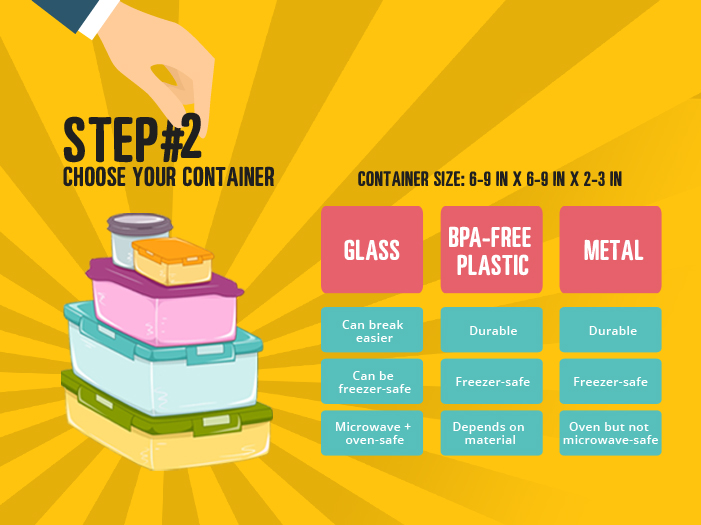
Whether you’re looking to enjoy your meals at home or eat them on the go, your container choice is super important to think about.
Why?
There are a few crucial factors that are easy to overlook when it comes to picking the perfect vessel for storing your meal. It may sound trivial, but your container choice could make or break your meal prep journey, so listen in for the lowdown…
How to choose the perfect meal prep containers:
Will your meals be hot or cold?
Glass containers: If you’re looking to reheat your meals in the oven, glass containers would be the best way to go. They’re super sturdy and respond to heating well.
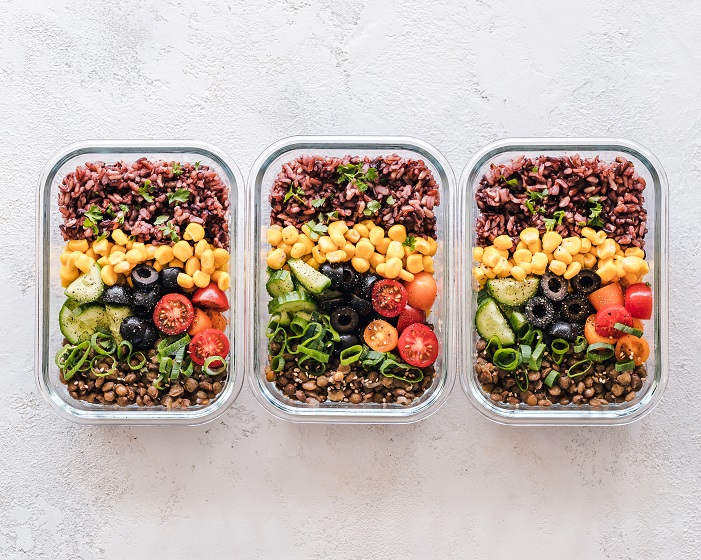
Glass or BPA-free plastic containers: If you’re more likely to use the microwave, glass or BPA-free plastic containers are your best bet.
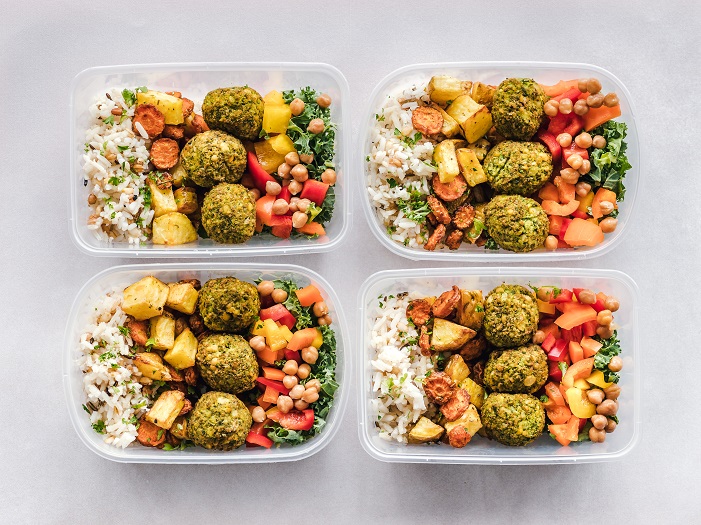
“Why BPA free?” you ask.
The pesky chemical used in certain plastics has been shown in research to leach into foods and drinks – potentially impacting the brain, prostate and blood pressure.
Not ideal…
Metal containers: If you want to eat your meals cold and skip the reheat altogether, metal meal prep containers are a reliable option (as well as glass and plastic).
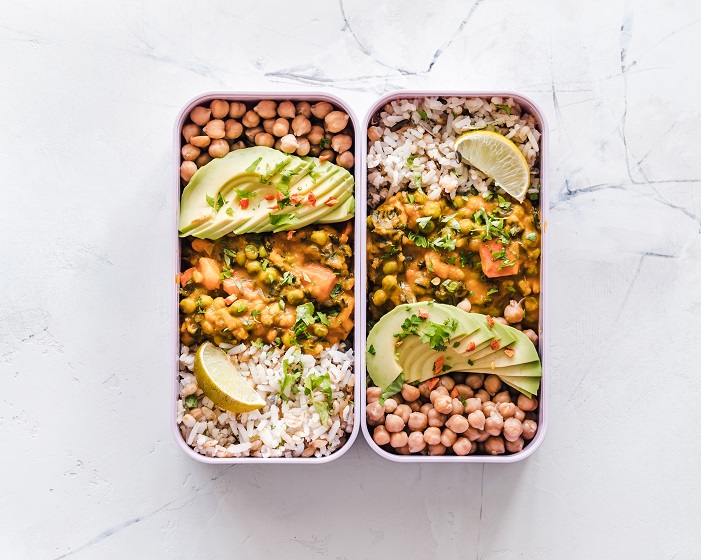
However, it’s important to remember that most metals are not safe for reheating in the microwave.
The metal reflects the electromagnetic waves away from the food, resulting in uneven heating, damage to the oven and potentially even a fire hazard!
Bonus pro tip for cold foods:
Glass mason jar containers: If you really want to look like you know what you’re doing, glass mason jars make for super Instagrammable salads and breakfast pots. #INSTAFood
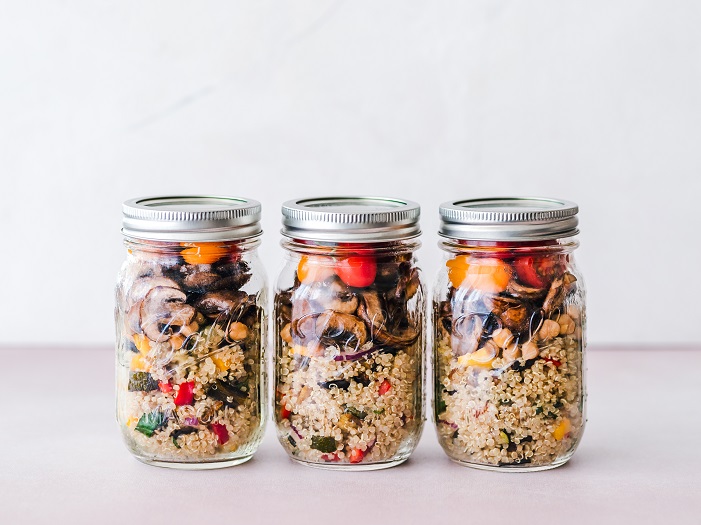
Container size matters…
As you’ve likely noticed, meal prep containers come in all shapes and sizes. The most important factor here is to find a container that’s right for you and your current goals.
The Goldilocks principle is what we’re shooting for:
Not something that’s so small you’re likely to undereat, but not so large you’re going to fill it up and eat more than you need. Find that sweet spot in between.
For many people, meal prep containers that are 6-9 inches long by 6-9 inches wide, and 2-3 inches deep typically work the best.
Travel-friendly containers?
If you know you’re going to be traveling to and from work or school or wherever it is your adventures take you, make sure your containers are secure.
That means a tight clip lid to prevent any leakage. You might even want to use extra padding around the vessel if it’s likely to get bashed around.
The last thing you want to discover on your lunch break is that the lentil stew you spent hours slaving over on the weekend is now decorating the inside of your backpack…
Meal prep containers we like
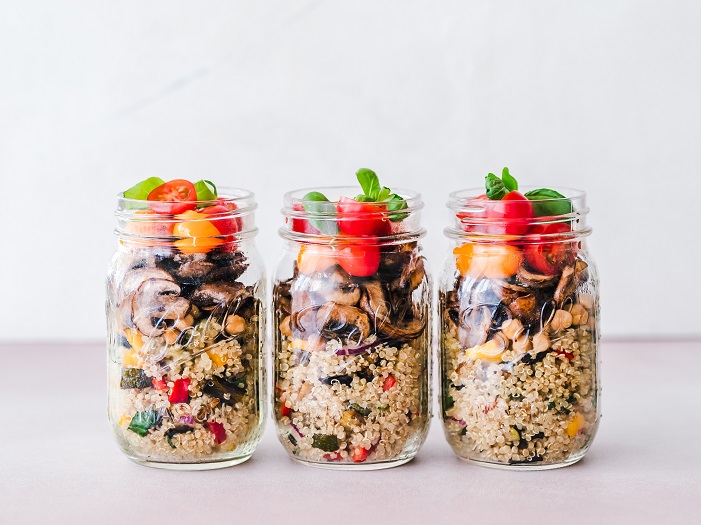
With all of the above in mind, here are a few meal prep container options that work well:
- Fitpacker BPA-Free Plastic Meal Prep Containers
- Airtight Glass Meal Prep Containers
- BPA Free Plastic Bento Style Meal Prep Bowls
- Mason Jar Containers
SUMMARY
Step 2: Choose Your Containers
A) Container size: 6-9 inches long, 6-9 inches wide, 2-3 inches deep. You may also need smaller pots for sauces, snacks + sides.
B) Glass and metal containers are usually oven-safe. Never microwave metal!
C) Plastic containers are travel-safe and can often be microwaved (go for BPA free).
Step 3 – Picture Your Portions
Now that you have chosen your containers, portioning your food will come easily. Thinking about portion sizes before cooking is a crucial step in creating nutritionally balanced meals. It also makes it easier to see exactly what you need to shop for. This means less food waste at the end of the week – saving you money and helping out the planet.
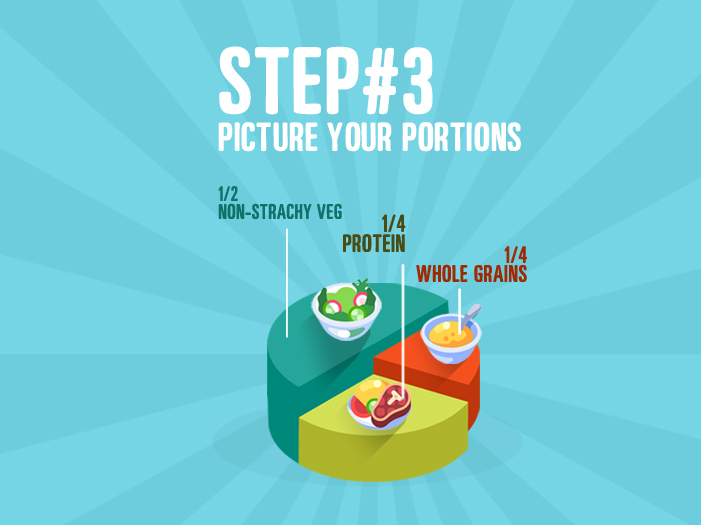
The Breakdown – The Easy Way!
On an average day, health professionals recommend 45-65% of calories to come from carbohydrates, 20-35% from fat, and 10-35% from protein. Portioning out your meals can help achieve that breakdown, but put the calculator away! Simply looking at your container will give you an idea of how to puzzle together a balanced meal.
For a lunch or dinner meal:
As a general rule of thumb, about a quarter of your container would be filled with protein, another quarter with whole grains or starchy vegetables, and the remaining half with non-starchy vegetables or salad greens. Take a look at the infographic below to see what we are talking about:
You can also use your hand as a reference. If using meat, fish or poultry for protein, a good portion would be around the size of your palm. For grains or starchy vegetables, aim for a portion the size of your fist. Non-starchy vegetables and leafy greens tend to be packed with vitamins and minerals but low in total calories. Feel free to fill the rest of your container with as much as you’d like.
Healthy fats can be incorporated into the meal through the use of oils during cooking or in salad dressings. Other great sources include oily fish, avocados, nuts and seeds.
When it comes to breakfast:
Some people enjoy eating a lunch-like meal, but many lean towards smaller portions. Unless intermittent fasting is a part of your nutrition practice, it’s a good idea to prioritize a healthy breakfast. This will help you maintain a stable appetite and energy levels throughout the day.
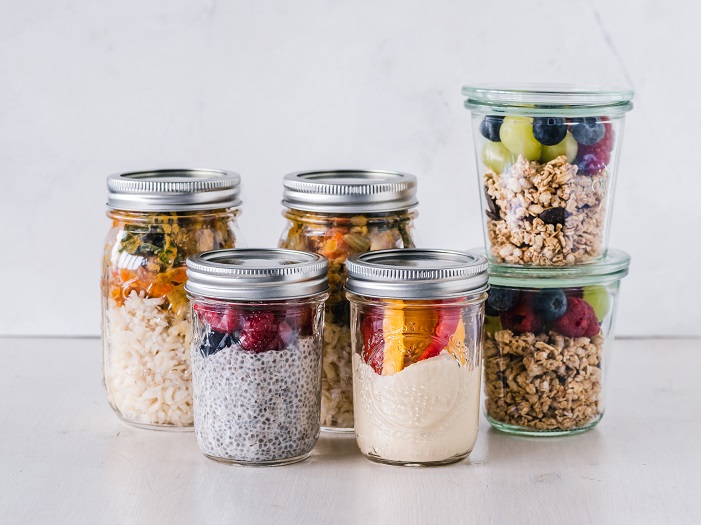
Again, make sure to incorporate good sources of protein, healthy fats, and fiber-rich carbs to keep you fuller longer. Check out our breakfast recipes later in the guide for some inspiration!
SUMMARY
Step 3: Picture Your Portions
A) A typical lunch or dinner meal will include: ¼ Protein source, ¼ Carbohydrate source, ½ Non-starchy veg/salad.
B) Healthy fats can be incorporated within the non-starchy veg portion of the meal.
Step 4 – Choose Your Recipes and Get Cooking!
Time for the fun part…
With the groundwork set and the planning complete, you’re now ready to choose your recipes and get cooking!
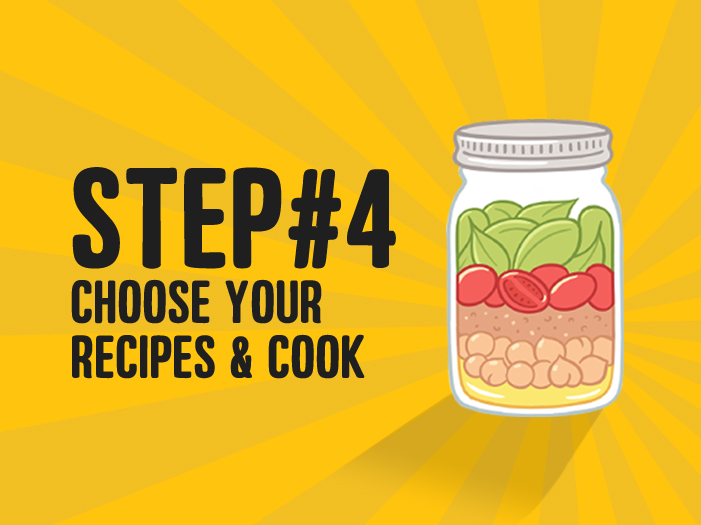
Use the portions outlined in step 3 to craft your own amazing recipes, and get your chef on!
Protein Recipes
- Easy Broiled Chicken Drumsticks
- Baked Chicken Breasts
- Easy Honey Baked Salmon
- Garlic and Lemon Baked Salmon
- Easy Roast Beef
Non-Starchy Vegetable Recipes
Whole Grain/Starchy Vegetable Recipes
Meal Prep Roasting Basics
If it’s not already, your oven is about to become one of your best buddies.
When it comes to meal prep, roasting is a super convenient way to batch cook ingredients with minimal effort required. All you need to do is slice, dice, season and relax.
If you want to get creative and play around with your own seasonings and roasting recipes, follow this chart from the Food Safety guys at for some inspiration.
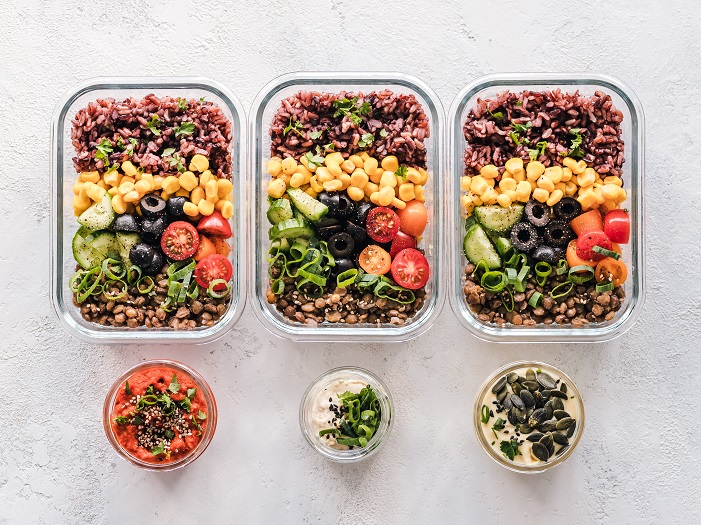
And remember:
Safety first!
Different foods cook best at different temperatures, so make sure you’re following recipe instructions and food safety guidelines to ensure your food is not only delicious, but also free from harmful bacteria.
SUMMARY
Step 4 – Choose Your Recipes
A) Craft your own delicious recipes by mixing and matching protein, non-starchy veg and starchy veg/whole grains.
B) Add in healthy fats and natural seasonings (herbs and spices) to taste.
C) Roasting is a super convenient way to bulk cook ingredients.
Step 5 – Pack and Store
With your mouth watering meals prepared, now it’s time to pack them away so they’re ready to consume whenever you need them.
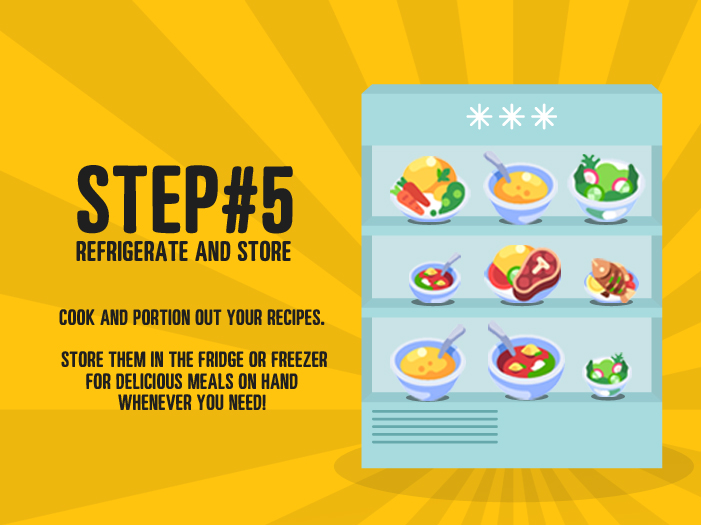
A few storage basics:
- Portion. Start by evenly portioning out your meals into your containers of choice. Measuring each time using a weighing scales can help you be more accurate with portion sizes, but it’s totally optional.
- Organize. Store those containers in the fridge or freezer (within two hours) to help prevent the growth of dangerous bacteria. Bonus points for organizing your meals for each day of the week.
- Enjoy. When you’re ready to eat, reheat your nutritious meal to the correct temperature (defrosting if needed) and tuck in!
- Be Safe. If you’re unsure how long a certain food will keep after refrigeration, refer to the chart provided by the Food Safety Administration
SUMMARY
Step 5 – Pack and Store
A) Evenly portion out meals into containers and store them in the fridge or freezer.
B) Pack away within 2 hours of cooking to minimize the risk of harmful bacteria growth.
C) Refer to the Food Safety Administration guidelines on storage times for various foods.
Meal Prep FAQs
You ask, we deliver.
There’s a lot of information in this beginner’s meal prep guide, and we’re not expecting you to take it all in first time.
So with that in mind, here are some of the most common questions and struggles we see related to meal prepping, and how to conquer them:
Meal prep seems overwhelming… How can I make sure I stay on track?
Start slow and follow along with a process (download our free PDF checklist as a reminder). Once you get over that initial adjustment period of making the change, meal prep will quickly become an ingrained part of your lifestyle. You’ll wonder why you didn’t make the switch sooner!
How do I avoid getting bored of the same old meals?
Using exactly the same ingredients for your week’s worth of meals is convenient, but it’s not necessarily the most inspiring way to go. Keep things fresh and exciting by experimenting with different flavor profiles. Use herbs and spices to dip into cuisines from all around the world.
What’s the difference between meal prep and meal delivery?
With meal prep, you set aside time once or twice to prepare your own meals. With a meal prep delivery service, you get to choose your pre-packaged meals, but with the added bonus of not having to plan them, shop for ingredients or do any prep.
How long does it typically take to meal prep?
This depends on how many meals you’re making at a time and how complicated each recipe is. Anywhere between 30 minutes to 4 hours seems to be standard for a week’s worth of meals.
Do I need to count calories?
Not necessarily. Some people looking to achieve certain body composition or weight loss goals can benefit from measuring their food and measuring their calorie intake. However, it’s not an absolute requirement to make meal prep work!
Is meal prep suitable for my diet?
Yes. Plant-based, Vegetarian, Paleo, Atkins, Keto, Whole30, Flexitarian, Gluten-Free – the great thing about meal prep is it can be tweaked to meet any dietary requirements you can think of.
How do I store meal prep and how long do they last in the fridge?
We recommend storing your prepped meals in BPA-free and microwave, freezer, and dishwasher safe containers in the refrigerator for up to a week. Storing them in the freezer can extend shelf life for much longer. Follow this refrigerator and freezer guide by the Food Safety Administration for specifics.
How do I freeze meal prep?
Store your meals in freezer-safe, airtight containers for optimal freshness. It is best to store each meal separately so that you are only thawing and reheating what you need when it is time to eat. Follow this refrigerator and freezer guide by the Food Safety Administration as a reference for storage times.
Where can I buy meal prep containers?
Meal prep containers can be found in the food storage section at a variety of department/grocery stores, such as Target or Walmart. You can also purchase them online on sites such as Amazon.
How many days can I meal prep for?
This number is completely up to you! Many individuals who work during the week prefer to prepare their meals on a Sunday to enjoy for the next 5 days. If you are looking to meal prep for more than 5 days, you can store your meals in the freezer to extend shelf life. Keep in mind that certain meals, such as salads, will not taste as good once frozen.
Why do people meal prep and is it worth it?
People meal prep for a variety of reasons. Many do it to help them save time during the week, eat a more balanced diet, or save money. It is totally worth it if you eat and enjoy the meals you prep!
Is meal prep safe?
As long as you are safe in the kitchen and store your meals properly, meal prepping is safe. Follow these Food Safety Tips by the Centers for Disease Control and Prevention for how to meal prep safely and avoid food-borne illnesses.
How do I cook rice and how much should I cook for meal prep?
This depends on how many meals you are prepping for. As a rule of thumb, one cup of uncooked white rice yields 3 cups cooked. One cup of uncooked brown rice yields 2 cups cooked. If you are prepping 5 meals, we recommend cooking 2 ½ cups of brown rice. You then end up with 5 cups (1 cup for each meal). Follow this Stove-top Rice recipe if you want to learn how to cook rice and don’t own a rice cooker!
How do I grocery shop for meal prep?
Grocery shopping for meal prep requires some planning. You need to get familiar with how much food you need, and what recipes you will be following before you shop. Follow our 5 step meal prep guide to streamline the process, and check out our “Pantry + Grocery Basics” list for grocery-cart worthy items!
Is a meal prep service worth it?
If you want the benefits of meal prep without any of the work, then a meal prep service may be worth it. Make sure you look for one that provides healthy, balanced meals that come in convenient packaging. Feel free to check out our meal delivery service – it’s what we live for!
Ready… Steady… Cook!
There you have it:
Everything you could possibly need to know about how to meal prep successfully and develop lasting, healthy eating habits – for yourself, and your family.
The remaining step is the most important one:
Putting the ideas we’ve talked about in this meal prep guide into action.
If you’re feeling overwhelmed, remember to start small and move forward at your own pace.
If you can persevere and get over that initial hurdle, meal prepping will become a habit for life. One that will support you and allow you to stay on track with your health goals through thick and thin!

Fresh N Lean is the nation’s largest organic meal delivery service. Our tasty, chef-prepared cuisine is always fresh and never frozen, and we offer convenient meal plans like Protein+, Keto, Paleo, Standard Vegan and Mediterranean. Choose Fresh N Lean for affordable nutrition, delivered to your doorstep.
